Yeast infections can crop up in the ears, paws, underarms, even the mouth. With the number of places yeast can invade, is it really any surprise that there are so many questions around the best way to beat yeast?
So, what exactly do you need to know about yeast infections? We’ll cover the what, why, how, and more for you– including what you can do to offer your dog relief no matter where that yeast may be.

On The Agenda
Who Gets Yeast Infections
Any dog, no matter their age, breed, or size, can get yeast infections.
Yeast occurs naturally in several areas of the body– in the nose, ears, gastrointestinal and genital tracts. It’s even one of many in a complex community of oral flora inside your dog’s mouth, actually. All of these areas could become culture plates under the right circumstances.
Certain breeds are more likely than others to develop grease and phlegm buildup in their ears and body, especially if they have folds.
Wrinkly Dog Breeds, i.e., cute smooosh faces (shar peis, boxers, bulldogs, mastiffs, etc.)
Floppy-Eared Breeds, i.e., droopy boops (setters, cocker spaniels, hounds, retrievers, beagles, etc.)
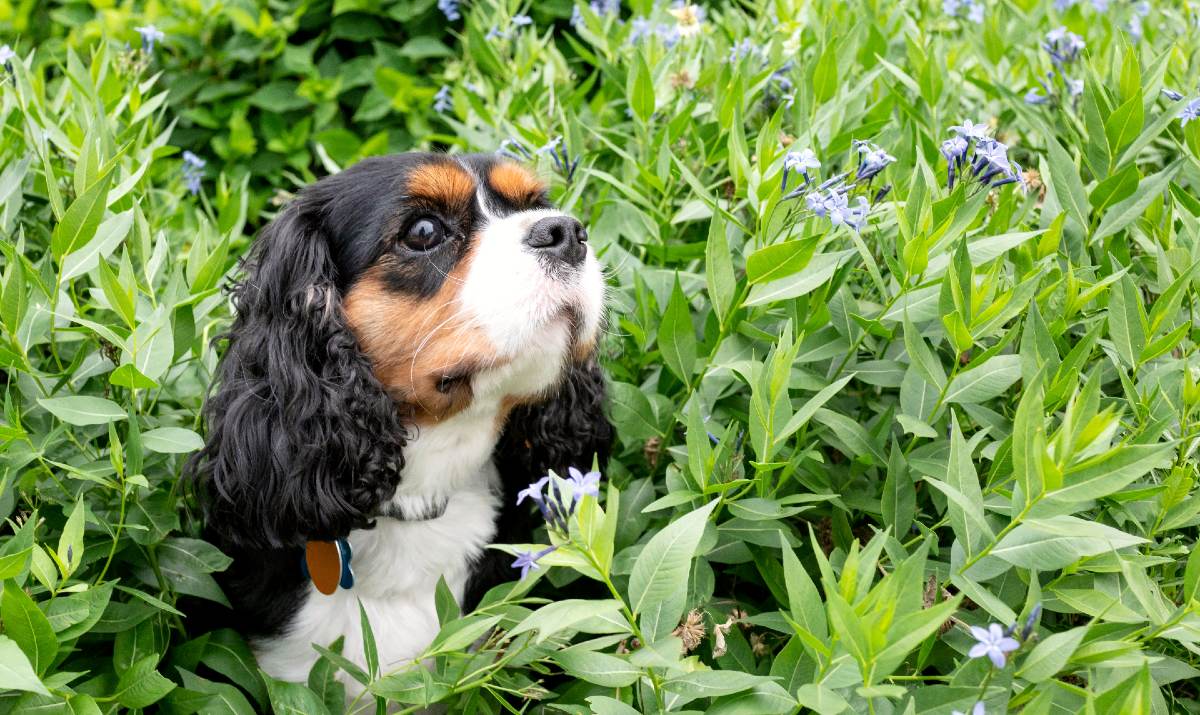
But that simply means you should be aware that it’s a possibility with these breeds.
How Do Dogs Get Yeast Infections?
Yeast infections are secondary to a larger underlying issue. They’re opportunistic pathogens that take advantage because they can. You can treat the symptoms of a yeast infection, but until the root issue is addressed, your dog is vulnerable to recurrence. The majority of yeast infections occur because of an overactive immune system and, in less common instances, an underactive immune system.
Allergies and the hyperreactive immune system
Yeast infections are just a symptom of a larger underlying issue. So, in the case of allergies, an over-reactive or hyper-reactive immune response is the root of the problem. Then that imbalanced immune system creates the most hospitable environment– a warm bed and the smells of a freshly cooked meal wafting through an open door, if you will. No invite needed.
Allergies are a hyper-reaction– one that occurs when our bodies and our pet’s bodies hyper or over-react to allergens. This response creates heat and inflammation, which tend to go to the head (think ears) and to the butt and the belly and armpits– areas where the skin is thinner.
With heat and inflammation comes that incessant itch and, of course, licking and chewing. Lick, chew, gnaw on their paws, rub their ears and noses, and repeat. As they try to quell the itch, doing so makes little abrasions on their skin where the body’s fluid pools. This creates the perfect breeding ground for yeast blooms because they have everything they need to grow– a warm, moist environment in the ears or between paw pads, with lots of food from the body’s fluids.

This cycle of itch, itch, scratch repeat creates the perfect culture plate.
Underactive Immune System
It may be less common, but it’s equally important to know that it can be a cause.

We all have some yeast in our gut (fun fact): it’s completely normal. It’s just one of the TRILLIONS of living microorganisms that reside in your dog’s gut, making up what’s called the gut microbiome. Not only is this community complex, but it’s responsible for vitally important functions, including keeping yeast in check.
What’s more, upwards of 85% of the immune system resides around the gut microbiome, so a healthy microbiome goes hand in hand with a healthy immune system. One directly impacts the other.
What’s more, as an opportunist, yeast may not stay in one place in the case of a low immune system. It invades because it can, so yeast can colonize the entire body if you don’t focus on bringing the immune system back up. Most dogs with yeast infections have it in more than one spot– it could be in one or more paws, both ears, or even the entire body.
How Can You Tell If Your Dog Has A Yeast Infection?
The symptoms of a yeast infection depend mostly on where the infection takes place, but there’s two telltale signs that should get you to consider yeast.
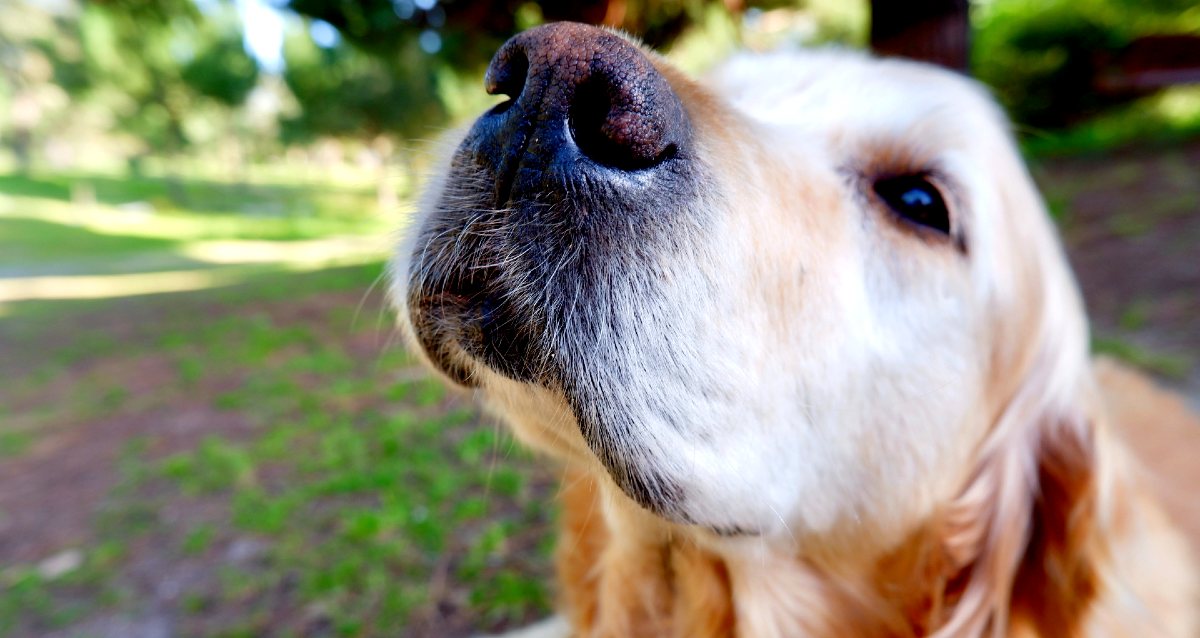
#1 The vast majority of dogs will become incessantly and chronically itchy at the site of the infection.
A yeast infection can occur anywhere on the skin, but there are also hot zones of the body– where yeast occurs naturally– the nose, ears, gastrointestinal and genital tracts. The most common yeast infections are in the ears.
If it’s a yeast infection in the ears, the dog may constantly shake and scratch at his head.
In the mouth, the dog may drool excessively.
In the bladder, it may be paired with inflammation in the bladder, otherwise known as cystitis.
In open sores or hot spots on the skin.
If it’s in the paws, she will not be able to leave them alone. There may be rusty-red hair between the toes.

#2 The biggest indicator that yeast is also in the mix, is that dogs with yeast infections have an overall smelliness to them.
It’s like this musty, moldy bread smell not unlike corn chips.
What about allergies & yeast?

When it comes to allergies and yeast infections, the two are intertwined.
Why it’s a bit confusing.
Both can be cyclical.
Meaning, they’re both common in the spring when temperatures rise, and they can both stop in fall when it cools. To most pet parents, that solely indicates grass or pollen allergies. Plain and simple, done deal. Except that’s not always the case because yeast infections mimic environmental allergies.
Both share some of the same symptoms.
You’ll often see your dog swatting at his ears (it could be an indication of phlegm, bacteria, or a yeast overgrowth because the body HAS to be complicated). Cats, too, can get yeast infections, and while the itchy ears could be yeast (or maybe phlegm or bacteria), it could also be mites.
Dogs may also lick, bite and gnaw at their paws incessantly, but both yeast infections and the heat and inflammation of allergies can produce that incessant itchiness.
You’ll know that yeast is in the mix though because of that second telltale sign– yeast’s distinctive odor. The musty, moldy smell along with a greasy, gooey coat, especially in the paws, is why we have the term, “Frito feet,” actually. Lean in and take a whiff because your pup will have this gooey, greasy moistness that actually smells like corn chips.
A healthy dog won’t smell, so gooey, greasy, Frito-smells are big yeasty flags that tell you that it’s more than allergies alone.
NOTE: A yeast diagnosis should be verified with your veterinarian who will most likely examine the discharge under a microscope looking for yeast cells.
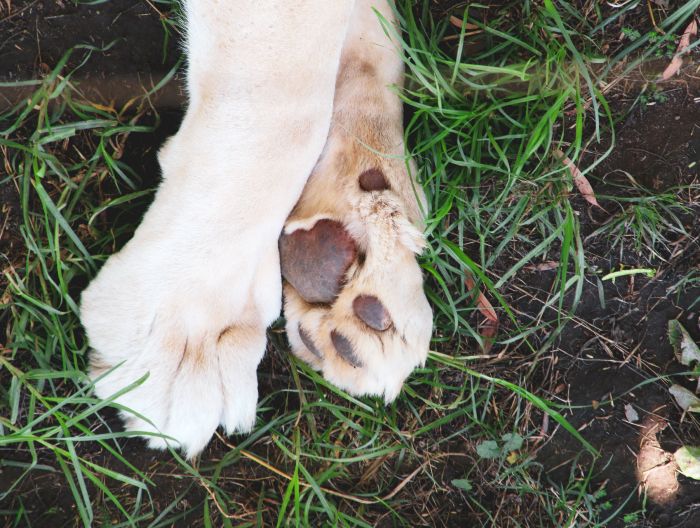
What Do You Feed A Dog With A Yeast Infection?
Start with a diet of REAL, WHOLE foods in species-appropriate proportions. You want high-quality, clean, digestible proteins. Chicken breast from the butcher or deli is VERY different from the meat meals you’ll find in pet foods.

- A diet high in proteins, including organ and skeletal meats (70-80%)
PRO TIP: You won’t find this on the guaranteed analysis. This is how a recipe should break down, and if you can’t find this on a website, you should request it from the manufacturer.
- Low in carbohydrates from nutrient-rich fruit, veggies, and seeds (20% or less)
PRO TIP: You’ll need to calculate carbohydrates because it’s not included in a guaranteed analysis. Find the “guaranteed analysis” on the bag of food. Fiber is roughage that doesn’t break down into sugar, so it’s not included.
100% – % protein – % fat – % moisture – % ash (if not listed, use 6 percent) = % carbs
- A 1:1 Omega 3:6 ratio, ideally.
As a pet parent, this is your gold standard– get as close to this as you can. If you can’t find this information on the bag or the manufacturer’s website, don’t hesitate to give them a call.
What not to feed
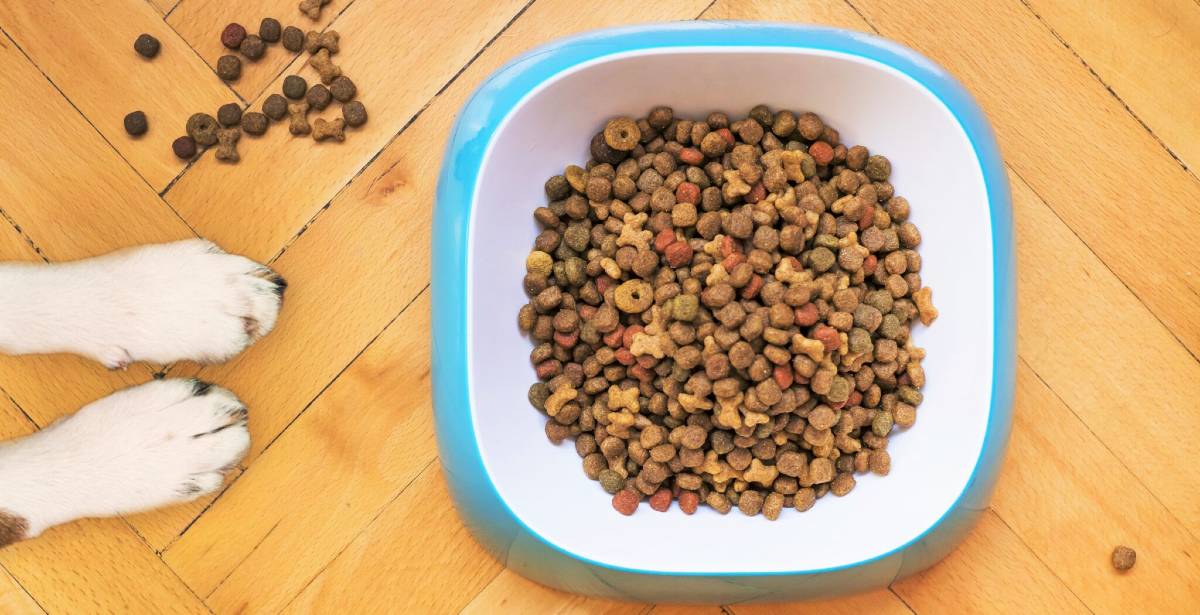
A species-inappropriate diet, or diet high in carbohydrates, generally (read always) the case for dry dog foods, i.e., kibble does not make the cut.
Carbs & sugars feed yeast growth.
Circle back to the complex community of oral flora in your dog’s mouth as an example– one of the many places a type of sugar-digesting yeast takes up residence in the body.
Kibble, made with anywhere from 40-60% carbs, can feed the harmful bacteria in your pet’s mouth, including opportunistic yeast that could multiply and grow and outnumber the good bacteria charged with protecting your four-legger’s mouth. It could stay local, i.e., the mouth, or it could colonize the entire body.
You’ll start with the right foods and then focus on harmonizing the immune system, either bring it up or down, and back to homeostasis. Head down to How to Get Rid of A Dog’s Yeast Infection to learn more.
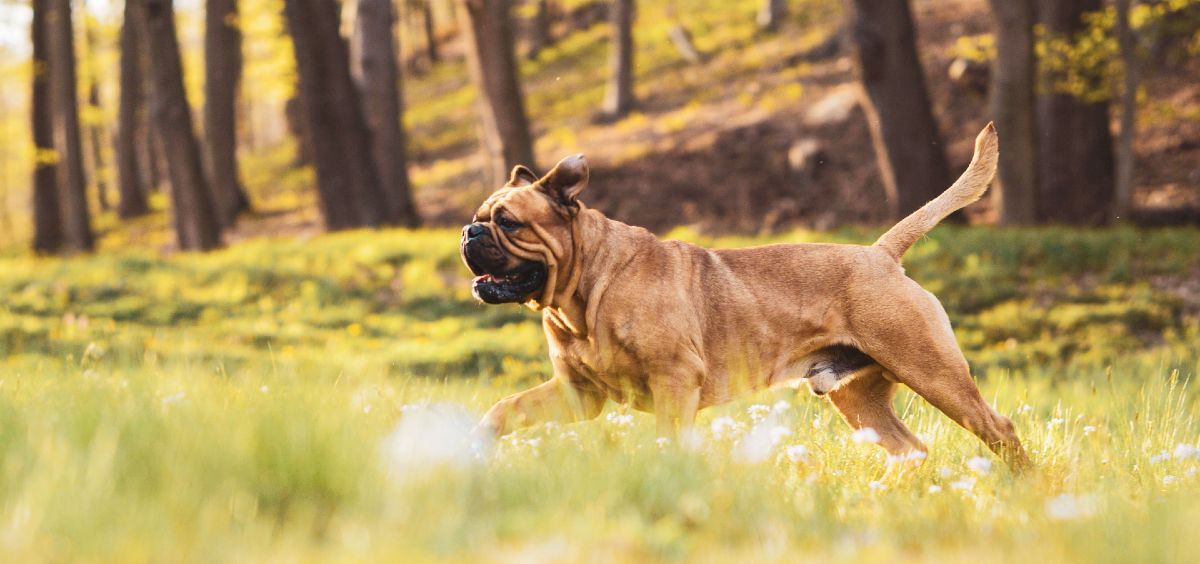
How To Get Rid Of A Dog's Yeast Infection
First, you have to pinpoint the underlying cause – is it an overactive or under-reactive immune system? If you’re not sure what the underlying issue is, take the quiz for a personalized recommendation.
The immune system needs to be harmonized– either brought up in the case of a low immune system, or brought down in the case of a hyperactive immune response (i.e. environmental allergies).
You need to focus on diet first and foremost and then take these steps to harmonize the immune system.
For the hypersensitive or overactive immune response, i.e., allergies

Step 1– Support the gut by adding probiotics & prebiotics to the bowl
Just like the community found in your dog’s mouth, your dog’s gut microbiome is responsible for vitally important functions, including keeping yeast in check.
With upwards of 85% of the immune system in the gut, a healthy microbiome goes hand in hand with a healthy immune system– which is why adding healthy bacteria like probiotics does so much for your dog.
Therapeutic levels of probiotics, or beneficial bacteria, can flood the gut to competitively inhibit yeast’s growth, helping to rebalance the gut microbiome.
If your pup is experiencing yeast infections in the skin or ears, that could also have come from the gut, meaning it started in the gut and invaded the rest of the body, so adding therapeutic probiotics can help combat that yeast by increasing the numbers of normal beneficial bacteria to restore balance to the microbiome.

Step 2– Aid the liver by adding Milk Thistle to the bowl

When your dog has a hyper-sensitive reaction, the body becomes hot and inflamed. So our goal is to soothe the body and bring down the heat.
Detoxifying plays a key role here because detoxifying the body helps bring down excess heat and inflammation. Since the liver is the detoxifying organ that helps the body clear toxins (chemicals, pesticides, medications, etc.) and waste byproducts, it needs a hepatoprotective like Milk Thistle.
As a detoxifier and protectant, milk thistle seed helps regenerate dead and dying liver cells to bring down the heat and inflammation that the hyper-reaction is causing.
This is crucial for the allergy dog since it’s the heat and inflammation that causes the uncomfortable, hot, itchy, greasy symptoms, creating that inviting environment for yeast.
Step 3– Cool the skin and reduce heat & inflammation to remove the dampness which yeast NEEDS to thrive.
Inflammation can cause thickening fluids and this phlegm can cause the foul odor and greasy coat associated with dogs with allergies. It can also cause moist hot spots, like ear infections, so bringing inflammation down is key for both the allergic reaction and the yeast infection.
Add anti-inflammatory Omega-3 fatty acids (EPA, DHA) and Omega-6 (GLA) to the bowl year-round to set up a solid foundation of skin health. These nutraceuticals repair, nourish, and strengthen the skin’s integrity.
Add in a combination of cooling, calming, and Yin-tonifying herbs. The combination offers allergy dogs and cats much-needed relief while rebalancing the immune system.
Add cooling proteins like fish, duck, or rabbit to your dog’s bowl to balance the hot, inflamed body, and avoid hot foods like venison or lamb. Again, it HAS to be low carbohydrate– 25% or less.
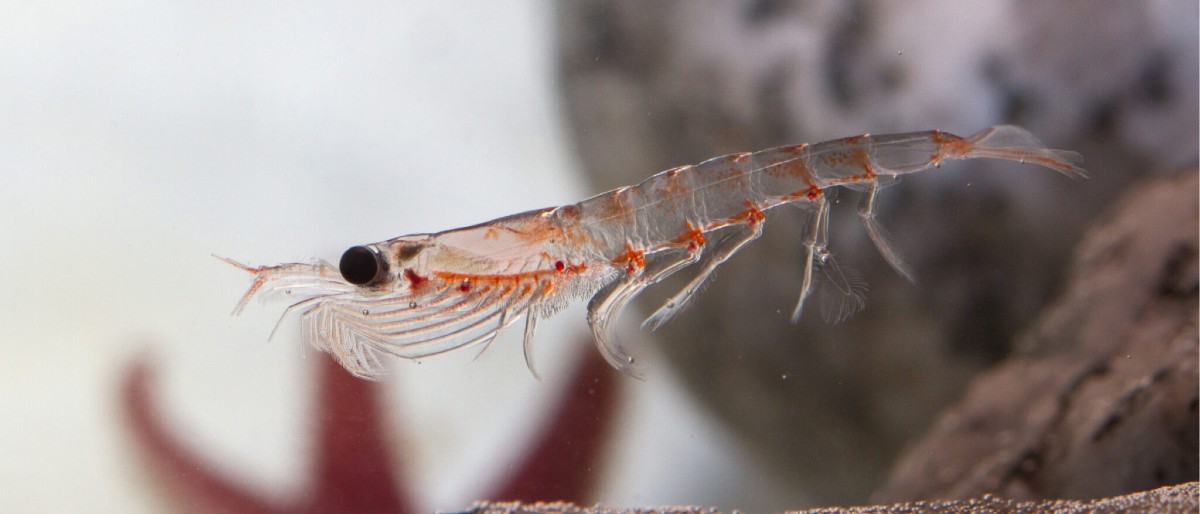
For the underactive or weakened immune system
We’ve all had those times when stress and exhaustion make this perfect cocktail to knock your immune system on its face.
And the same happens for our pets. When animals are stressed– because you moved into a new house, welcomed a new two or four-legged family member, or have to travel, their immune system is weakened. And that makes them exceedingly vulnerable to pathogens like yeast whose goal is to feed, colonize, and repeat.
So, the goal is to bring the immune system back up, fortifying your dog’s immune system to return it to a harmonized state. To do that, you have to help your pup develop a balanced immune response.
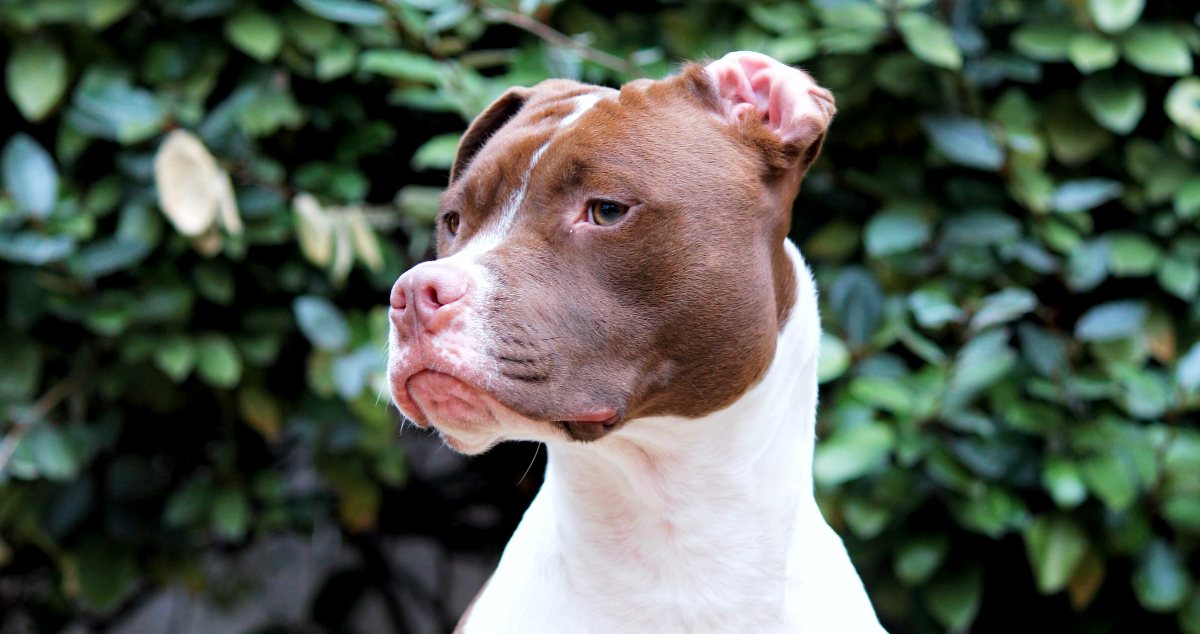
Step 1– Utilize food energetics and its principles to sway the body towards balance.
In traditional Chinese medicine, the focus is always on harmony and balance. Health requires that there be a balance of yin and yang.

Yin is the cold in the body– so think fluids, hydrating, calming, comforting characteristics.
Yang is the heat within the body– it’s our metabolism what gives us energy and fosters movement.
A subpar immune system is a sign of a cold pet– and that imbalance can be affected positively or negatively by food since foods have their own warming, cooling & neutral properties. Queue food energetics.
In the case of a cold pet, we want to warm the body, adding warming proteins like chicken and turkey or neutral proteins like beef to raise the Qi, still avoiding hot foods like venison or lamb, because even a cold dog can become too hot.
Again, the diet still HAS to be species-appropriate, including low carbohydrate– 25% or less.
Step 2– You need to add immune-supporting herbs like codonopsis, astragalus or ginseng, that will fortify the immune system even in the face of a yeast infection.
The body has this innate ability to right the ship, so to speak. The body wants to return to homeostasis– it wants to heal disease, reduce inflammation, so these herbs assist in the body’s natural resistance to pathogens and ability to keep itself healthy.
Common Misconceptions

Are yeast infections contagious?
Nope. But it can invade other parts of the body if it isn’t taken care of, so you have to treat the yeast, but also focus on bringing the body back to homeostasis.
I killed the yeast, but it just keeps coming back.
Yeast is an opportunist, a byproduct of an imbalanced immune system. If you aren’t addressing that, you leave the door wide open for a secondary opportunistic yeast bloom.
Topical Applications
In that same vein, this is something to consider as you use topical solutions like apple cider vinegar, coconut oil. Since they do so much to manage yeast and keep your dog comfortable, they should be a part of the solution, but you still have to address the underlying issue that’s creating this ideal environment in the first place.
Regimen
- Clean and disinfect yeasty areas at least once daily. Make sure to pat dry.
- Yeasty feet- Dunk them in a foot soak made up of 1 gallon water, 1 cup hydrogen peroxide, and 1-4 cups white vinegar.
- Yeasty ears- You can use a store-bought solution or witch’s hazel and swab using large cotton balls.
** If you suspect there’s an ear infection you need to know whether the eardrum has ruptured before putting any liquids down the ear. You can damage the inner ear if it has.
2. Apply topical solution– cream, salve, or oil you’re using.
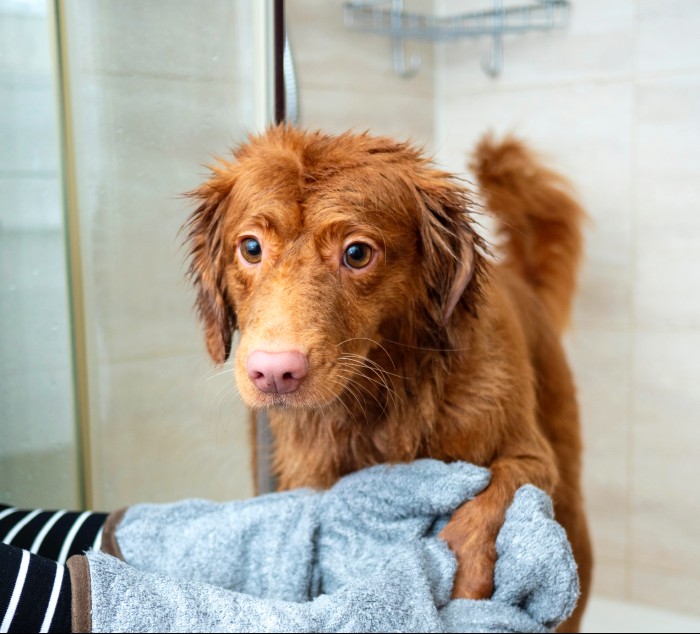
Antibiotics for Yeast Infections
Antibiotics don’t kill yeast, antifungals do. If you do have to use antibiotics, all bacteria is destroyed, good and bad. This can open the floodgates for more opportunistic pathogens, so it’s crucial to reseed the gut. Flooding the gut with healthy bacteria will help repopulate that complex community for a healthy, balanced microbiome.
Is yogurt good for yeast infections?
The logic behind feeding a probiotic yogurt is sound. Unfortunately, though, the presence of an ingredient is not the same as a therapeutic level of it– without therapeutic levels of probiotics, additions like yogurt aren’t enough. (And may do more to feed the yeast depending on the sugar values in the yogurt you choose. Plus, some dogs can be lactose intolerant which can lead to inflammation.)

Any probiotic added to the bowl needs to offer enough culture-forming units (CFUs) of live probiotics to make it past the stomach. The stomach is an acid pit, so if you don’t provide enough probiotics, it won’t make it to the lower GI tract, where the gut microbiome takes up residence so that it can make a difference.
With therapeutic levels of probiotics, or beneficial bacteria, they can flood the gut to competitively inhibit yeast’s growth, helping to rebalance the gut microbiome. Healthy bacteria like probiotics truly can do so much. They’re a must for your dog, in fact every dog–no matter if they’re perfectly healthy or they’re tackling a yeast infection. Their gut benefits. Their gut microbiome benefits and that means their overall health does, too.
How to Prevent Yeast Infections in Dogs’ Ears & Paws
Yeast always needs a warm, moist environment to flourish. But again, they are opportunists and a byproduct, so there are a few factors to consider for yeast prevention.
Consider their environment

Is their routine playing a part in recurrent issues?
Maybe your lab loves to swim in your local pond or lake, but it’s a hotbed for bacteria, fungi, and microbes. Be diligent and bathe them after every adventure. And be sure to dry the inside of their ears.
And their anatomy
Any dog can get a yeast infection, but there those chosen breeds– the floppy-eared dogs, the smoosh faces who are more likely than others to develop grease and phlegm buildup in their ears and bodies.
If this is the case for your pup, it really just comes down to awareness and taking the necessary precautions. Clean their ears, wipe their folds and then give them extra scratches for sitting through it.
A real solution– one that gets to the true underlying issue of yeast infections and makes the biggest difference for your d.o.g. can take time. Turn to that mug and remind yourself that this is to get them back to their glorious selves, and doing what they love. Take a breath and focus up because you’re about to tackle this yeast!

If you have questions or comments, don’t hesitate to reach out, or drop a line in the comments below! We’re here to lend a helping paw, and that includes personalized recommendations for your four-legger.
Share this Post

Dr. Chris Besent
Chris Bessent, DVM, MSOM, Dipl. OM, L.Ac. has over thirty years of experience in veterinary medicine including certificates in veterinary acupuncture, veterinary chiropractic and veterinary Chinese herbology. Imbued with Eastern philosophy and the knowledge that food is the foundation of health, Dr. Bessent also received her degree in veterinary nutrition and began to formulate recipes fit for a carnivore from nothing but whole foods. Currently, she divides her time between the Simple Food Project and Herbsmith, both of which are owned and operated out of her facilities in southeastern Wisconsin.

Kayla Behling
Kayla is the Content Writerr for Herbsmith. She has a cat named Professor Cat-Faced Meowmers, who goes by Kitty, and a goof of a dog, named Duck. She stays busy biking trails, playing board games, and searching for the next best craft beer.




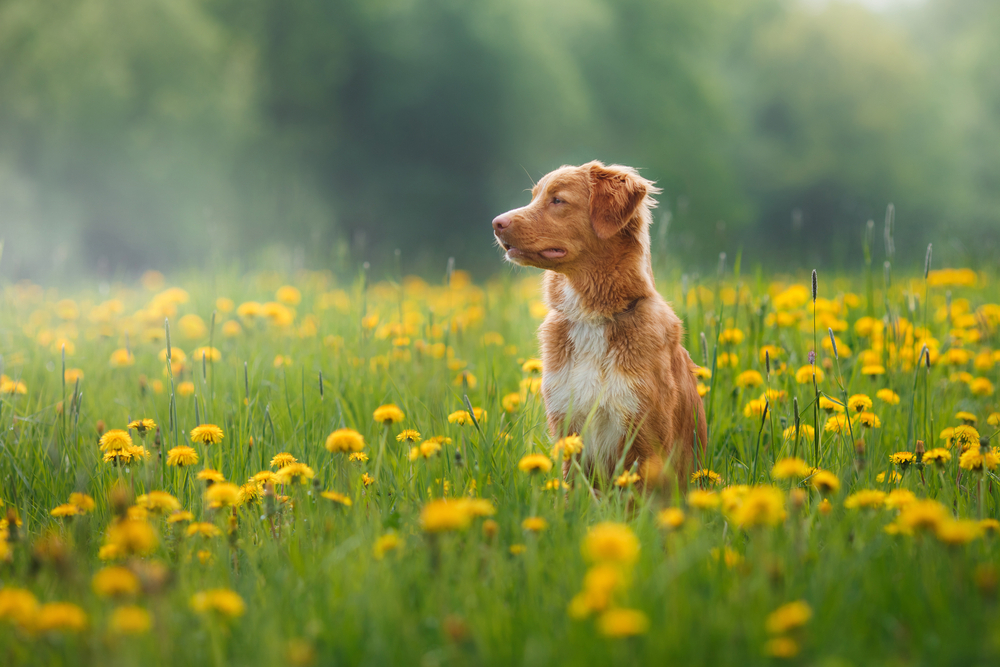
One Response
This is an excellent explanation of yeast infections. It is also made simple to help an average pet owner understand. Well done!
Comments are closed.